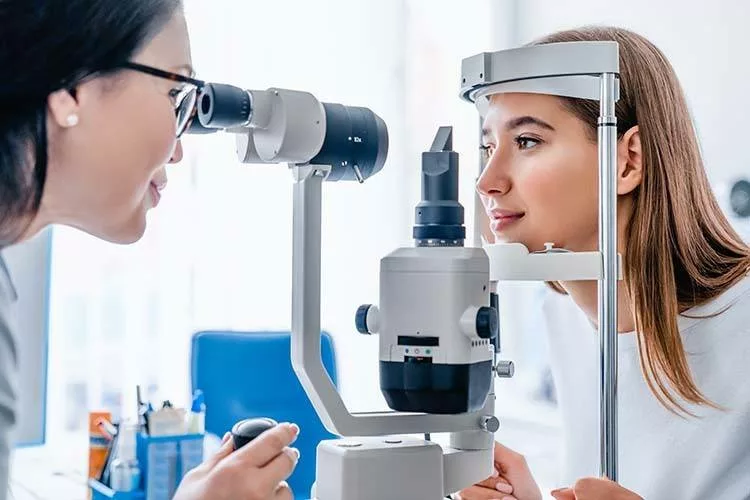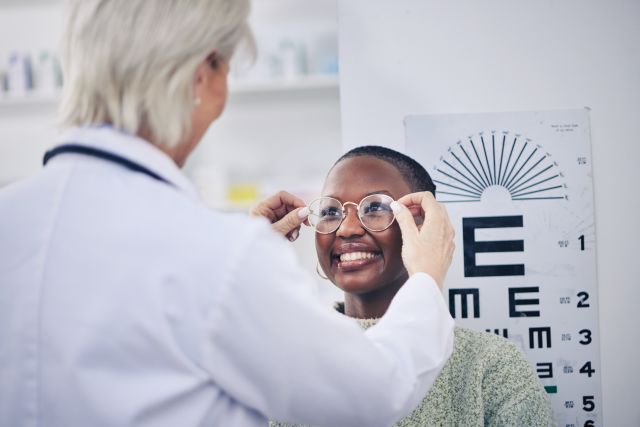The Comprehensive Eye Exam: What to Anticipate During Your Visit to the Eye Doctor
A see to the eye medical professional for a comprehensive eye exam is greater than a routine examination; it is a crucial action in protecting your visual wellness. From the first conversation of your case history to the accuracy of the aesthetic skill test, each component of the exam offers a certain function. But what exactly occurs during the eye health assessment, and how does it affect the prescription process? Recognizing these components is necessary for those that want to maintain optimum vision. As we check out each component, the significance of follow-up referrals will certainly likewise become clear.
First Appointment
The first appointment throughout an eye test offers as an important structure for comprehending a patient's aesthetic health demands. This stage establishes the tone for the entire examination process, permitting the eye doctor to gather crucial information regarding the patient's clinical background, way of life, and details vision issues. By diligently evaluating any kind of pre-existing conditions, medicines, or previous surgeries, the eye care expert can customize the examination to deal with specific requirements successfully.

Moreover, the first assessment is a possibility for people to articulate any concerns or inquiries, fostering a collaborative relationship with their healthcare company. This communication not only makes certain that the client really feels notified and comfortable but also encourages them to get involved proactively in their eye health and wellness management. Jointly, these conversations enable the eye doctor to create an individualized evaluation plan, making certain ideal care and specific diagnosis.
Aesthetic Acuity Examination
Beginning the core components of an eye assessment, the aesthetic acuity examination is designed to examine the intensity and clearness of a person's vision. This vital evaluation assists determine exactly how well an individual can discern letters or signs at a standard distance, usually using a Snellen graph (Optometrist Riverside). The chart makes up rows of letters that lower in size inside out, with the person positioned at a popular range of 20 feet
During the test, the client is asked to cover one eye and review out loud the smallest line of letters they can see clearly. This process is duplicated for the other eye. The outcomes are tape-recorded as a portion, with 20/20 vision showing normal visual acuity-- where the individual can see at 20 feet what an individual with regular vision can see at that range.
The aesthetic skill examination also identifies prospective refractive errors such as hyperopia, astigmatism, or myopia, which might require restorative lenses. By developing a standard of aesthetic efficiency, the examination is a vital analysis device that assists the eye care professional in developing a proper therapy strategy customized to the person's one-of-a-kind aesthetic demands.
Eye Wellness Analysis
Adhering to the aesthetic skill examination, a detailed eye wellness analysis is performed to make certain the overall well-being of the eyes. This essential segment of the eye exam involves a complete evaluation of both the outside and inner structures of the eye. The ophthalmologist or eye doctor starts by analyzing the eyelids, cornea, conjunctiva, and sclera for any kind of indications of infection, inflammation, or irregularities. Making use of specialized equipment like a slit light, the professional gains a magnified sight of the eye's makeup, allowing detailed examination.
Via the use of ophthalmoscopy or fundus photography, the retina, optic nerve, and blood vessels are thoroughly reviewed. In many situations, student extension is performed to improve exposure of the inner eye frameworks, although this may result in short-term light sensitivity for the person.
In addition, intraocular stress is determined to screen for glaucoma threat. This is generally done using tonometry, which can find raised stress degrees that could recommend possible damages to the optic nerve. Jointly, these analyses create a comprehensive analysis to maintain ocular health.
Refraction and Prescription
How does one guarantee ideal vision? A critical step click for more info hinges on the process of refraction and acquiring a precise prescription. Refraction is an advanced procedure conducted by eye care professionals to determine the specific lens power required to remedy refractive mistakes such as myopia, hyperopia, presbyopia, and astigmatism. The goal of this treatment is to analyze exactly how light bends as it travels through the eye, enabling the specialist to determine whether corrective lenses are essential for enhanced visual skill.
Throughout the refraction process, the person is asked to look with a phoropter, a device that includes various lenses. The practitioner will methodically alter these lenses and ask the person to compare clarity in between alternatives up until the best feasible vision is achieved. This procedure is crucial in crafting an exact prescription that specifies the proper lens power for eyeglasses or get in touch with lenses.
The prescription derived from this procedure not just maximizes vision however additionally functions as a foundation for picking suitable restorative glasses. It is necessary to make certain that prescriptions are on a regular basis upgraded, as changes in vision can happen gradually, emphasizing the significance of regular eye exams. This meticulous interest to detail assists keep clear, comfy vision in life.
Follow-Up Suggestions

During a follow-up go to, the eye doctor will certainly carry out a series of examinations to examine visual acuity and look for any type of modifications in vision that might demand an upgrade to the prescription. Furthermore, the follow-up offers a possibility to review any type of discomfort or concerns experienced with present eyewear. Changes can be made to make sure comfort and efficacy, whether via lens adjustment or frame changes.
For individuals with ongoing problems such as glaucoma, diabetes-related eye problems, or macular deterioration, more constant follow-ups may be necessary. These visits are important for managing and potentially slowing the development of eye disease. Complying with these recommendations can dramatically add to keeping visual wellness and stopping lasting issues.
Conclusion
The thorough eye exam is a vital procedure for keeping aesthetic wellness, incorporating a thorough assessment of medical history and vision issues. Key components check here include the visual acuity test, which evaluates eyesight clarity, and the eye health assessment, which examines the total problem of the eyes.
A browse through to the eye medical professional for a thorough eye test is even more than a routine check-up; it is an important step in safeguarding your aesthetic wellness.Kicking off the core elements of an eye assessment, the visual acuity examination is made to examine the intensity and clarity of a patient's vision.Adhering to the aesthetic acuity test, a thorough eye wellness evaluation is conducted to ensure the helpful resources total wellness of the eyes. These gos to permit the eye treatment professional to keep track of modifications in vision, update prescriptions, and evaluate the overall wellness of the eyes. Secret elements include the aesthetic acuity examination, which examines eyesight quality, and the eye health and wellness assessment, which takes a look at the overall problem of the eyes.